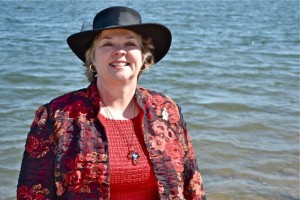By Corinne Hiser, ANP. M! Aug/Sep 2011.

Osteoporosis, or porous bone, is a disease characterized by low bone mass and structural deterioration of bone tissue, leading to bone fragility and an increased risk of fractures of the hip, spine, and wrist. Men as well as women are affected by osteoporosis, a disease that can be prevented and treated. In the U.S., more than 40 million people either already have osteoporosis or are at high risk due to low bone mass.
Bone is living, growing tissue and made mostly of collagen, a protein that provides a soft framework, and calcium phosphate, a mineral that adds strength and hardens the framework.
Throughout one’s lifetime, old bone is removed (resorption) and new bone is added to the skeleton (formation). During childhood and teenage years, new bone is added faster than old bone is removed. As a result, bones become larger, heavier, and denser. Bone formation outpaces resorption until peak bone mass (maximum bone density and strength) is reached around age 30. After that time, bone resorption slowly begins to exceed bone formation.
For women, bone loss is fastest in the first few years after menopause, and it continues into the post menopausal years. Osteoporosis—which mainly affects women but may also affect men—will develop when bone resorption occurs too quickly or when replacement occurs too slowly.
Risk Factors
Gender: your risks are greater if you are a woman.
Age: the older you are, the greater your risk of osteoporosis.
Body size: small, thin-boned women are at greater risk.
Ethnicity: Caucasian and Asian women are at highest risk.
Family history: people whose parents have a history of fractures may be at risk for fractures.
Risk factors you can change include:
Sex hormones: abnormal absence of menstrual periods, low estrogen level, and low testosterone level in men can bring on osteoporosis.
Anorexia nervosa: characterized by an irrational fear of weight gain.
Calcium and vitamin D intake: a lifetime diet low in calcium and vitamin D makes you more prone to bone loss.
Medication use: long-term use of certain medications, such as glucocorticoids and some anticonvulsants, can lead to loss of bone density and fractures.
Lifestyle: an inactive lifestyle or extended bed rest tends to weaken bones.
Smoking: smoking is bad for bones as well as the heart and lungs.
Alcohol intake: excessive consumption of alcohol increases the risk of bone loss and fractures.
Optimal Bone Mass
To reach optimal peak bone mass and continue building new bone tissue as you age you should consider several factors:
Calcium: 1,000 to 1,200 mg of calcium daily
Vitamin D: 600 to 800 IU daily
Exercise: weight bearing exercise is key, such as walking, hiking, jogging, climbing stairs, weight training, tennis and dancing.
Smoking: STOP!
Alcohol: Regular consumption of 2-3 ounces of alcohol a day may be damaging to the skeleton.
Medications: Long-term use of glucocorticoids can lead to a loss of bone density and fracture.
Detection is the key. Bone mineral tests can identify osteoporosis, and include a test called a DEXA scan, which is ordered by your health care provider.
Nutrition is also vital. A diet high in calcium, such as dark green leafy vegetables (spinach, collard greens), low-fat milk, salmon, sardines (with the bones), tofu, yogurt and cheese, is essential.
Medications for osteoporosis include biophosphonates such as Fosamax, Boniva, and Actonel, selective estrogen receptor modulators such as Evista, hormone replacement therapy, and parathyroid hormone.
Knowing your risk factors, getting a bone mineral density exam when indicated, and being evaluated by your health care provider are vital. Taking charge of your health is up to you!
For more information, visit:
NIH Osteoporosis and Related Bone Diseases, National Resource Center: bones.nih.gov
North American Menopause Society: menopause.org
National Osteoporosis Foundation: nof.org
M!
See the profile on Martha Gregory, who got busy putting a stop to her osteoporosis.

Leave a Reply